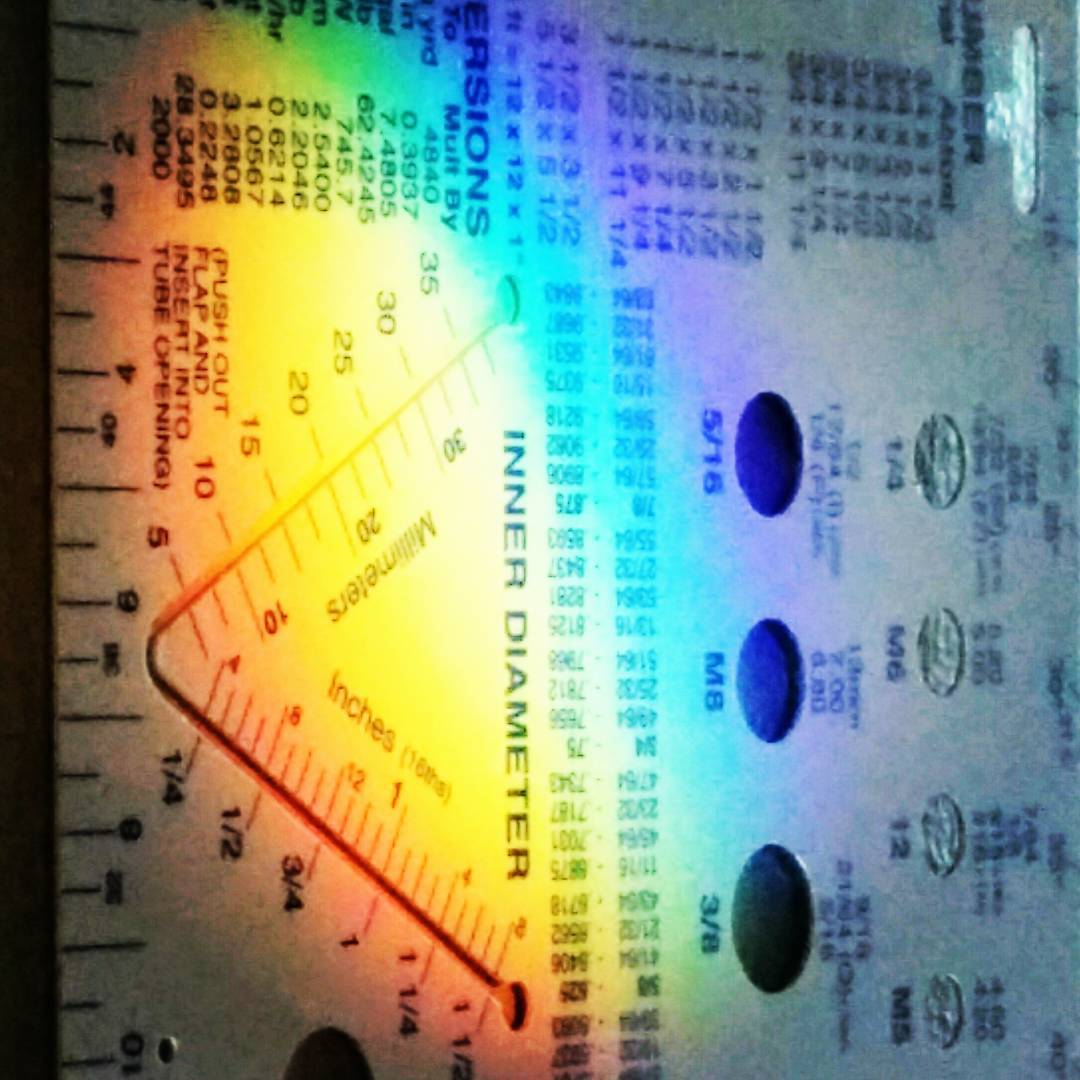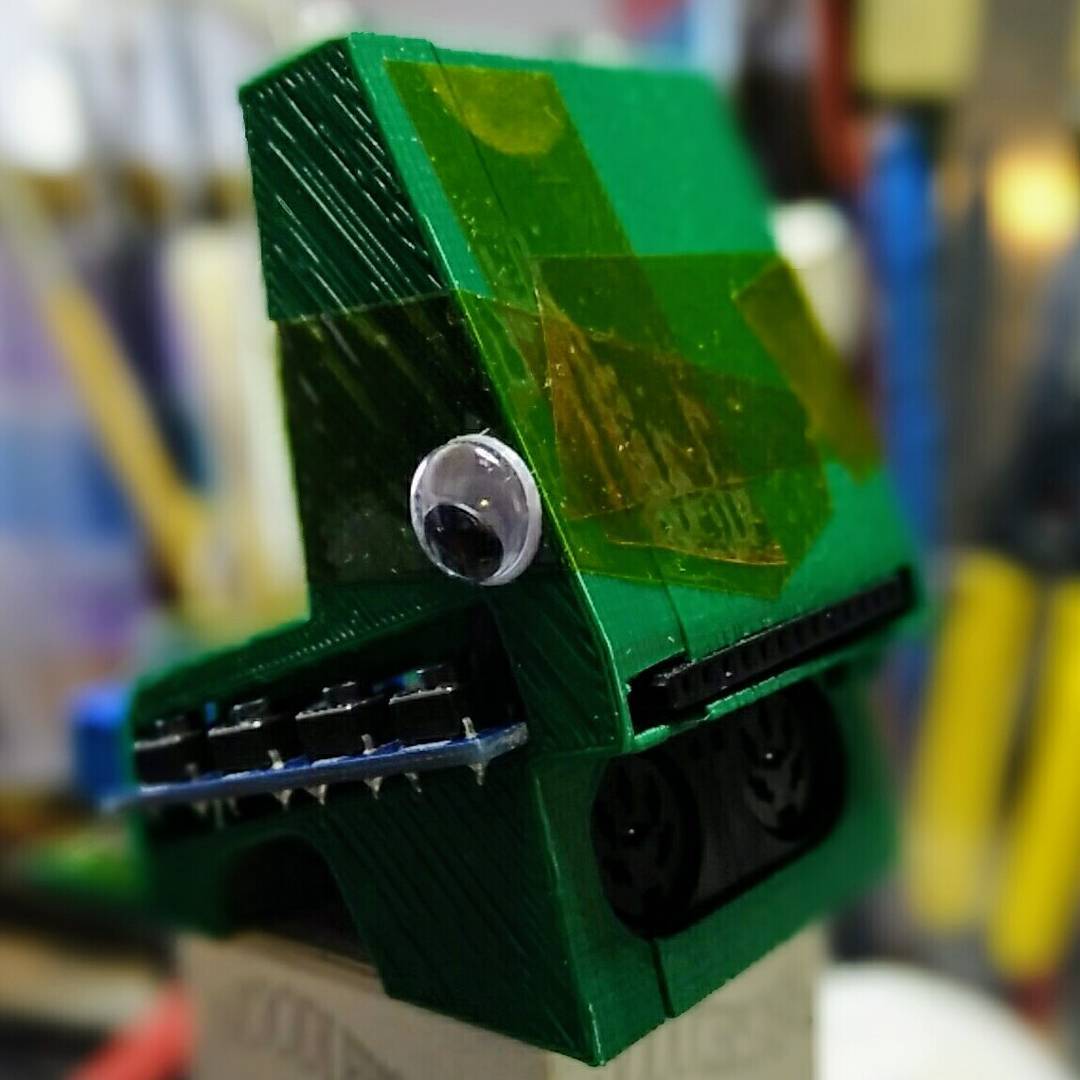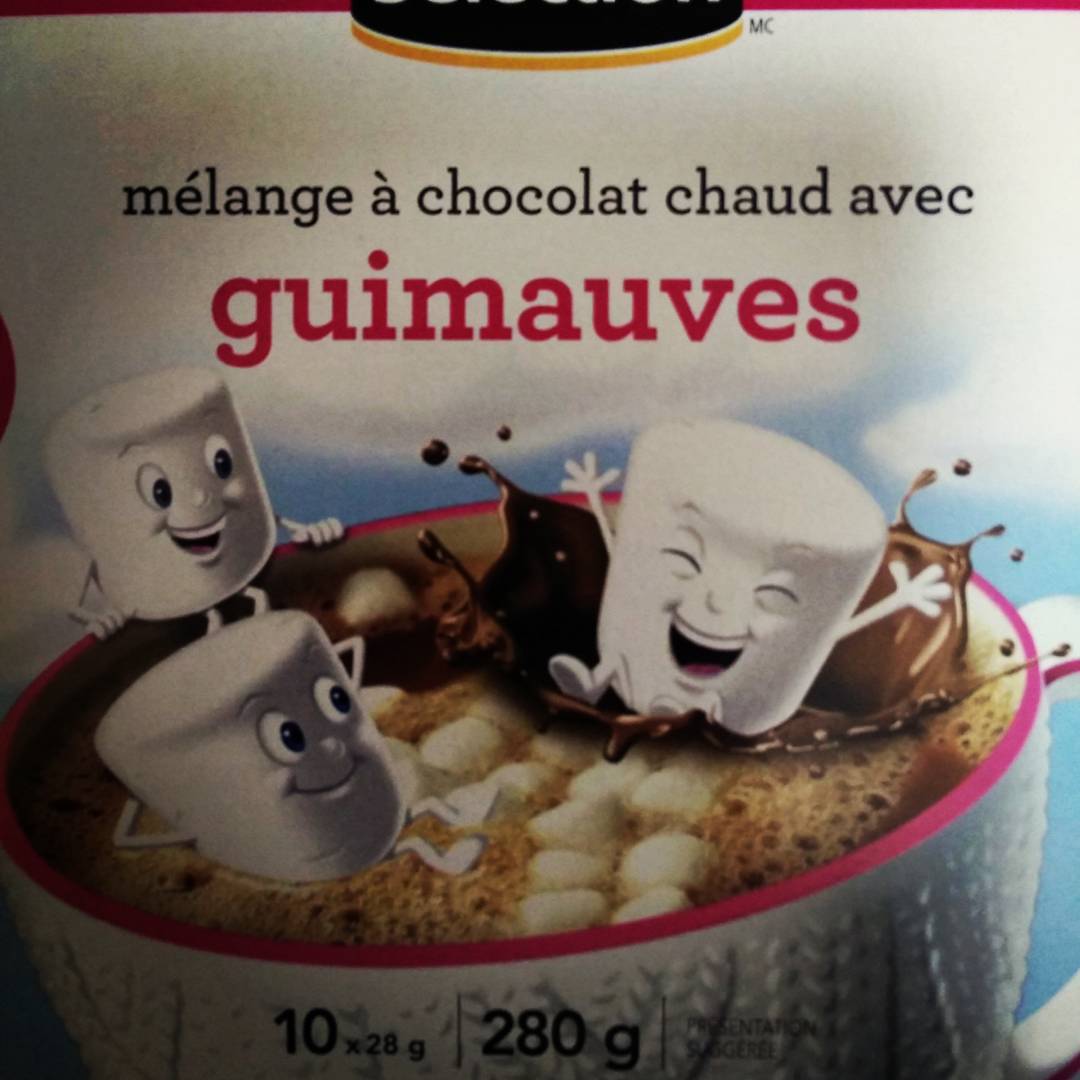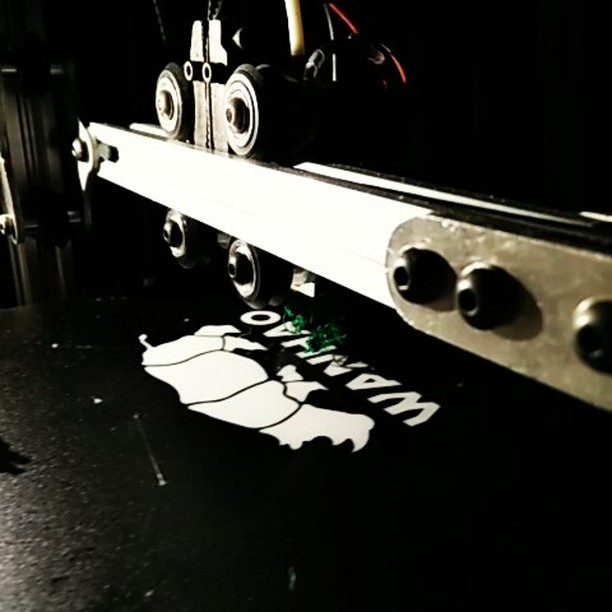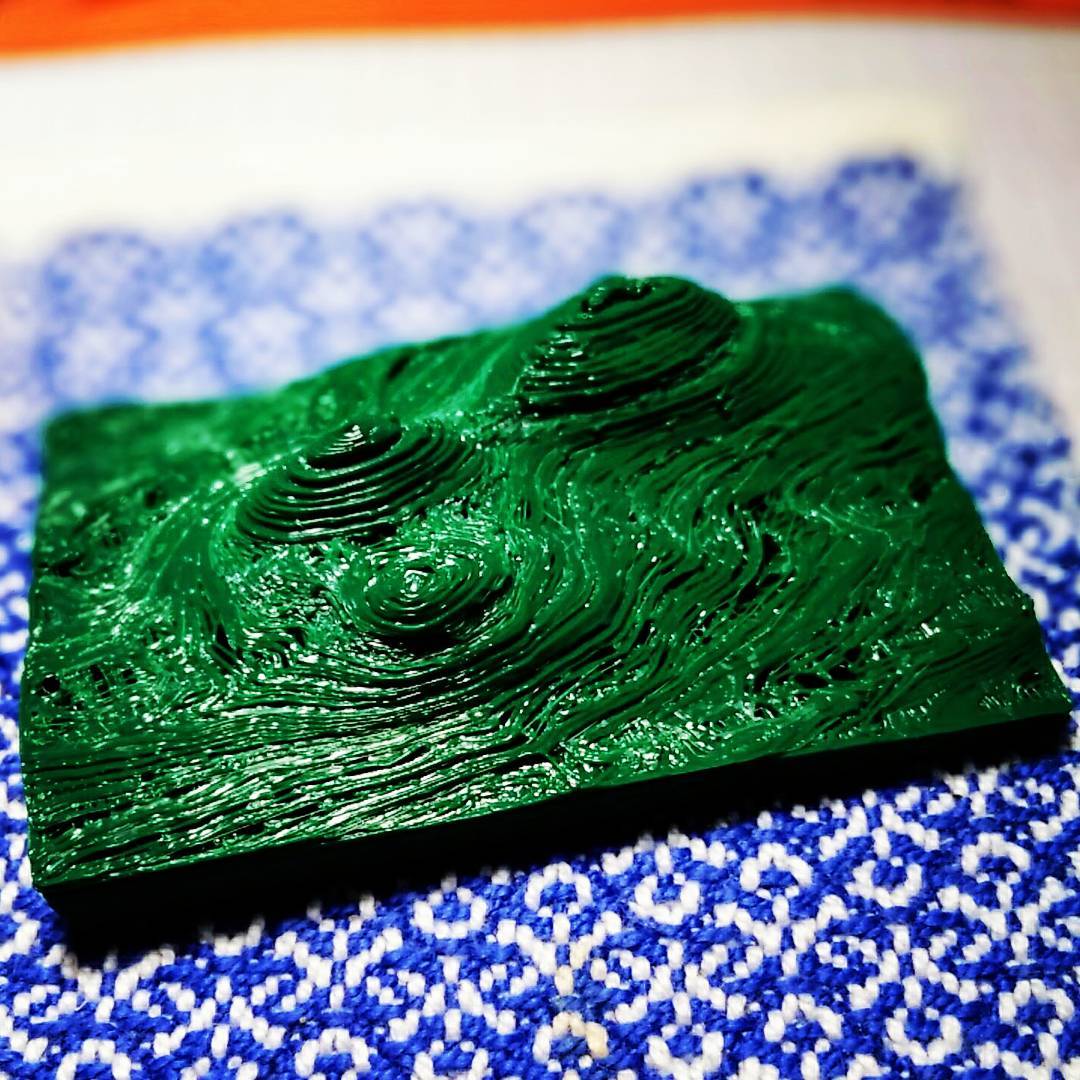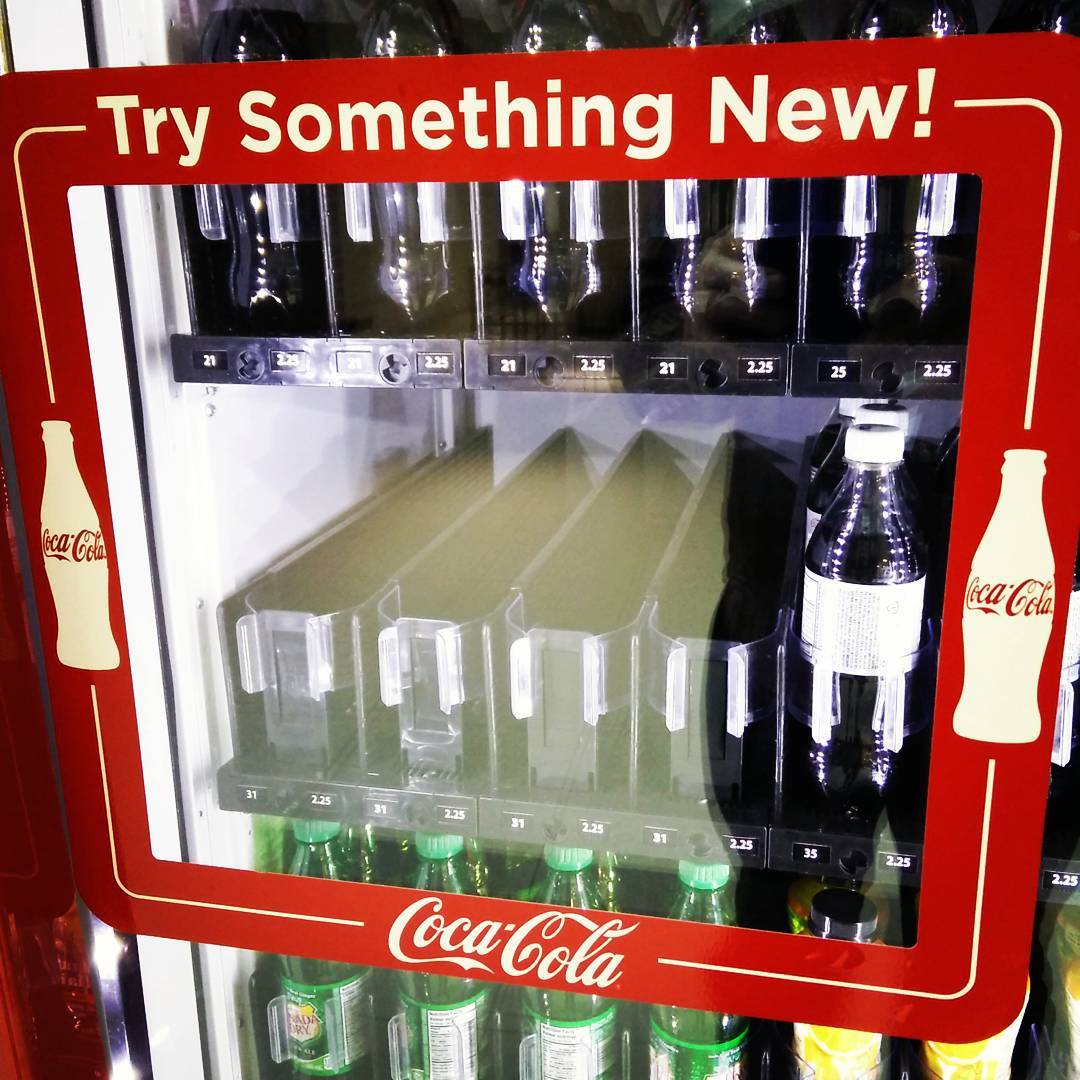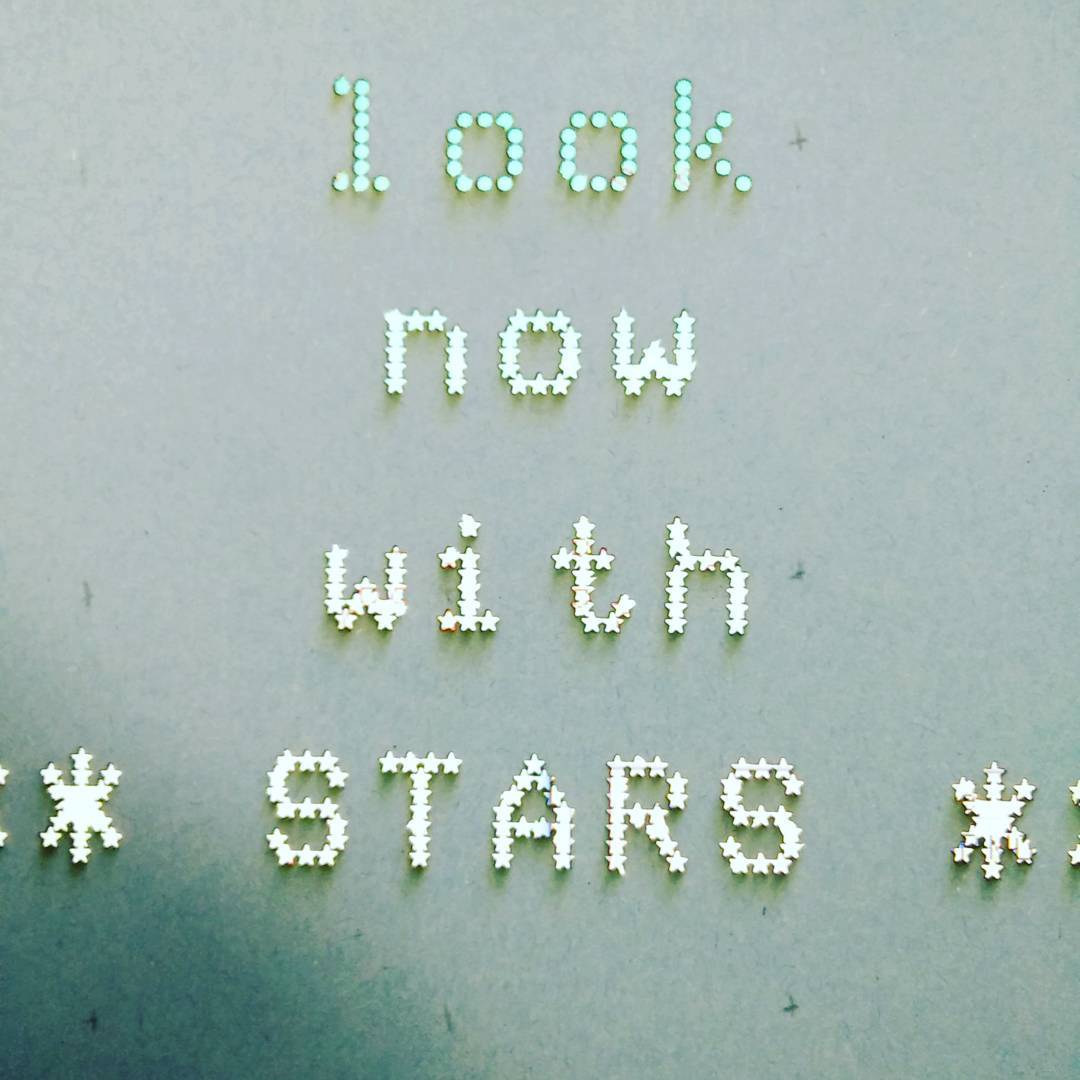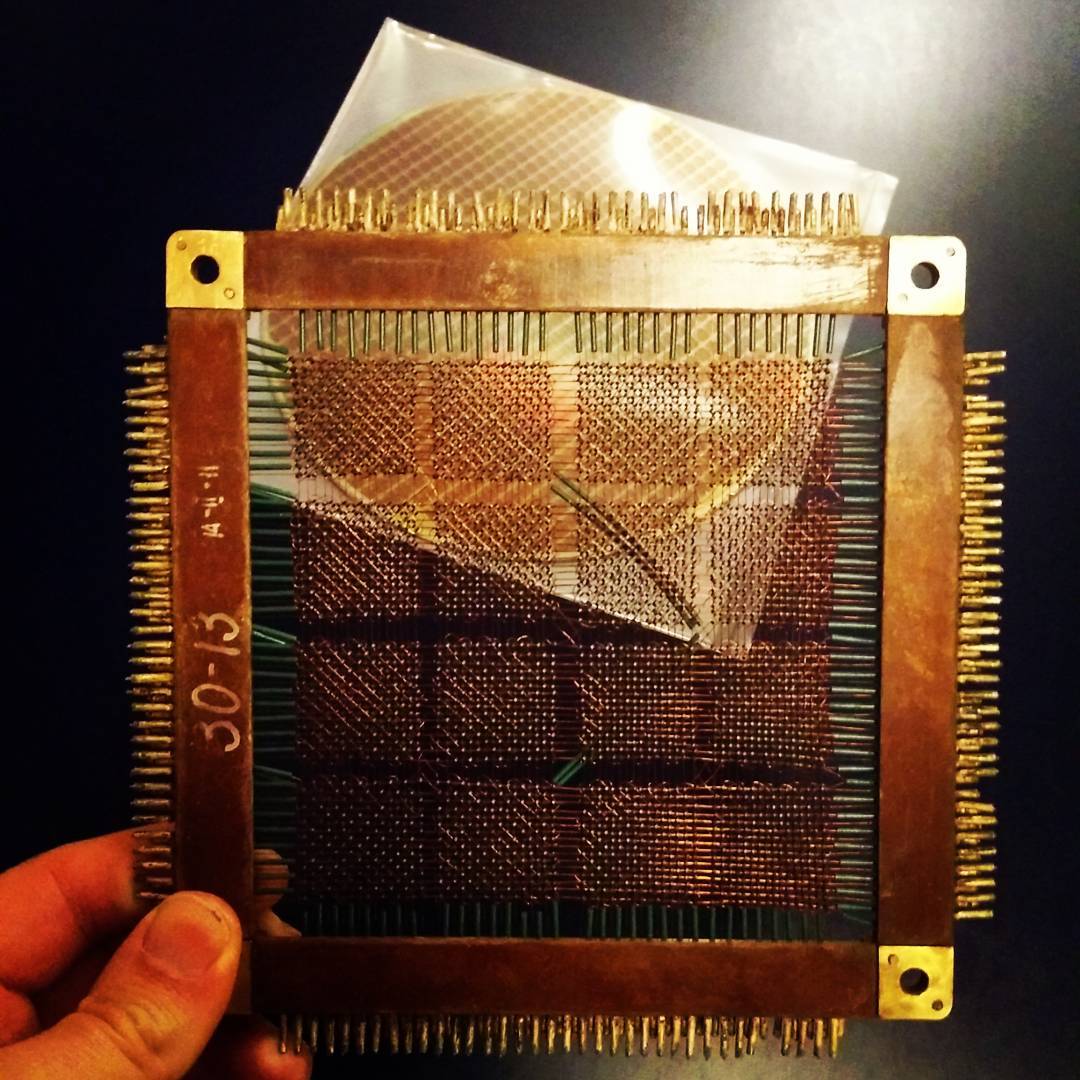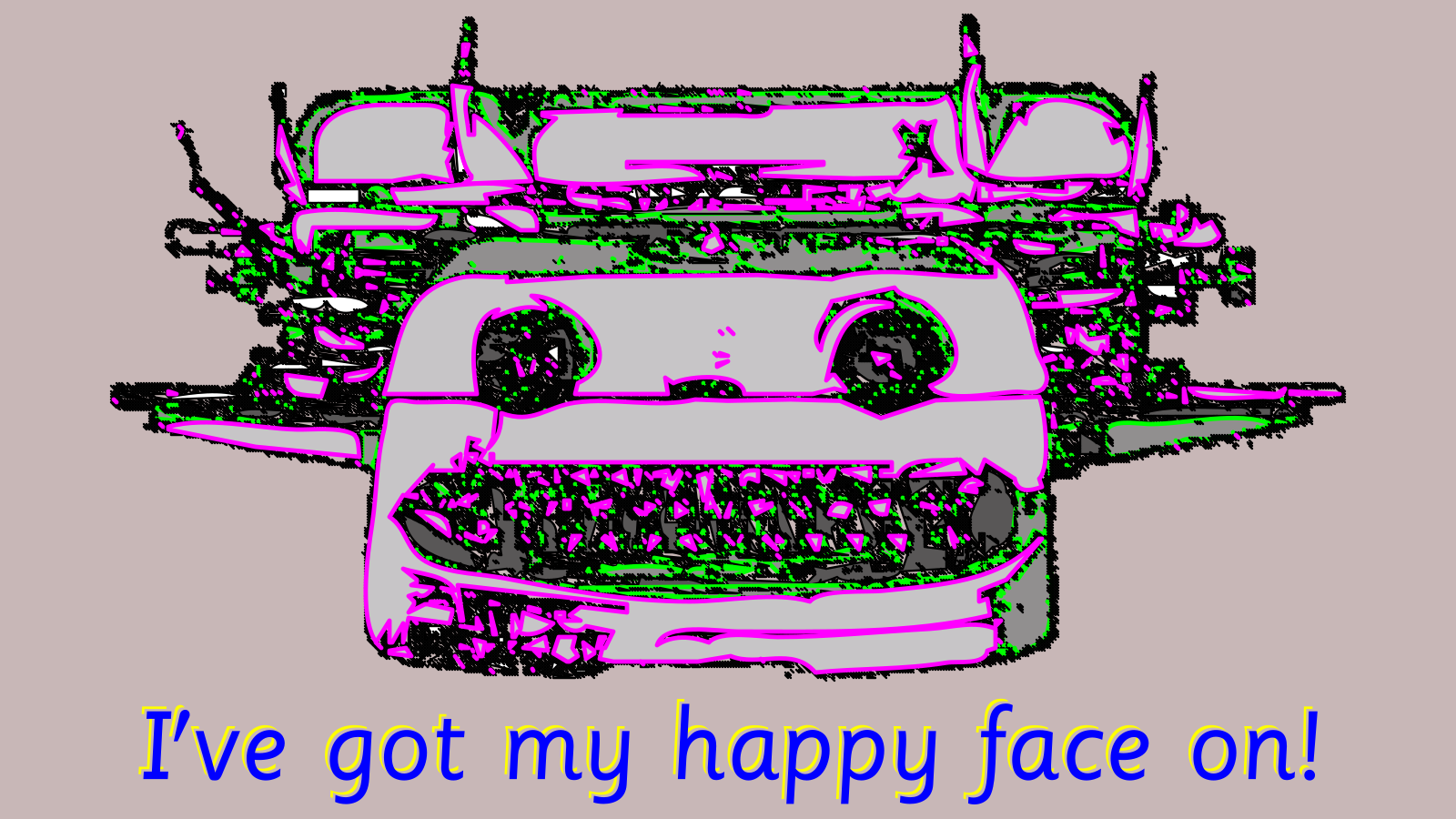Instagram filter used: Lo-fi
Author: scruss
-
Keypunch029 — for all your punched card font needs …
A fairly accurate rendition of the 5×7 dot matrix font printed at the
top of punched cards by the IBM Type 29 Card Punch (1965).Local copy: Keypunch029.zip.
Fontlibrary link: Keypunch029The 029 (as it is sometimes known) generated a bitmap font from an engraved metal plate pressing on a matrix of pins. A picture of this plate from a field engineering manual was used to re-create the pin matrices, and thus an outline font.
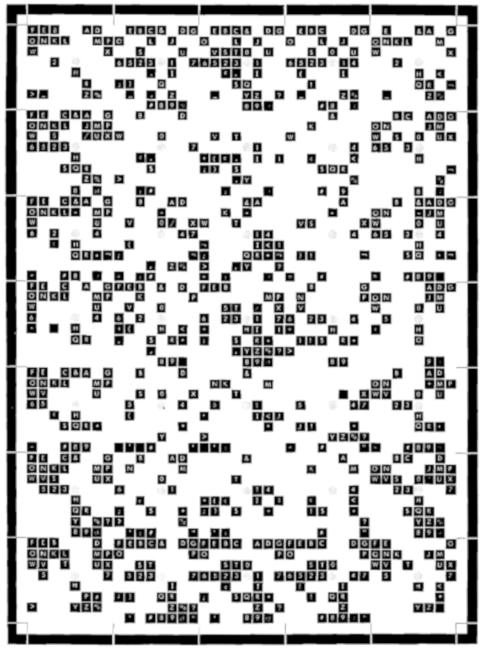
029 Code Plate 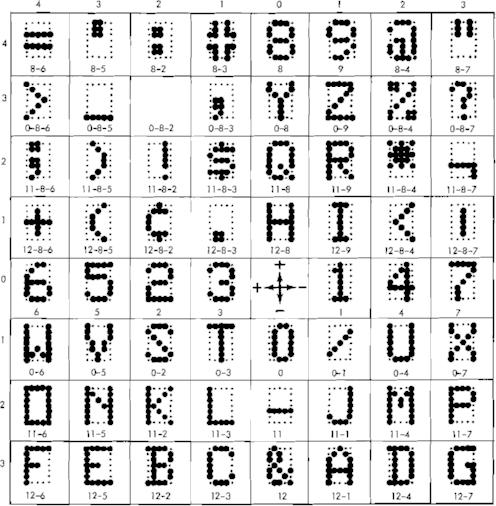
029 Code Key Historical Accuracy
The 029 could have many different code plates, but the one used here contained the characters:
<=>¬|_-,;:!?/.'"()@¢$*&#%+0123456789ABCDEFGHIJKLMNOPQRSTUVWXYZ
The character glyphs have been sized such that if printed at 12 points, the 029’s character pitch of 0.087″ is accurately reproduced. No attempt to research the pin matrix pitch or pin diameter has been made: the spacing was eyeballed from a couple of punched cards in my collection.
The earlier IBM Type 26 Card Punch (“026”) included a glyph for a square lozenge (Unicode U+2311, ⌑). The 029 code plate did not include this character, but I added it here for completeness.
The character set was extended to include:
- all of ASCII, with lower case characters repeating the upper case glyphs;
- sterling currency symbol; and
- euro currency symbol.
While there may have been official IBM renditions of some of these additional glyphs (with the exception of euro) no attempt has been made to research the original shapes. This font set is intended to help with the visually accurate reproduction of 1960s-era punched cards, mostly coinciding with my interest in the FORTRAN programming language. No attempt has been made to use historical BCD/EBCDIC encodings in these fonts. We have Unicode now.
The 029 card punch could not produce any bold or italic font variants, but FontForge can, so I did.
Things I learned in making these fonts
- The 029 card punch printer could be damaged if you tried to print binary cards, as there was no way to disengage the code plate from the punch mechanism.
- FontForge really hates to have paths in a glyph just touching. Either keep them more than one unit apart, or overlap them and merge the overlapping paths.
- EBCDIC is weird.
Sources
- Norbert Landsteiner’s amazing Punched Card Typography Explained page describes how the code plate system worked, and has JavaScript animations showing how characters were decoded (entirely mechanically) from the plate.
- IBM029-Field-Eng-Maint-Man-r.pdf – see page 59 for the code plate image. The site’s owner is part of the IBM 1401 Demo Lab and Restoration Project.
- Douglas W. Jones’s punched card index is all about punched cards.
-
In the unlikely event you need to represent Emoji in RTF using Perl …
Of all the niche blog entries I’ve written, this must be the nichest. I don’t even like the topic I’m writing about. But I’ve worked it out, and there seems to be a shortage of documented solutions.
For the both of you that generate Rich Text Format (RTF) documents by hand, you might be wondering how RTF converts ‘💩’ (that’s code point U+1F4A9) to the seemingly nonsensical \u-10179?\u-9047?. It seems that RTF imposes two encoding limitations on characters: firstly, everything must be in 7-bit ASCII for easy transmission, and secondly, it uses the somewhat old-fashioned UTF-16 representation for non-ASCII characters.
UTF-16 grew out of an early standard, UCS-2, that was all like “Hey, there will never be a Unicode code point above 65536, so we can hard code the characters in two bytes … oh shiiii…â€. So not merely does it have to escape emoji code points down to two bytes using a very dank scheme indeed, it then has to further escape everything to ASCII. That’s how your single emoji becomes 17 bytes in an RTF document.
So here’s a tiny subroutine to do the conversion. I wrote it in Perl, but it doesn’t do anything Perl-specific:
#!/usr/bin/env -S perl -CAS # emoji2rtf - 2017 - scruss # See UTF-16 decoder for the dank details # <https://en.wikipedia.org/wiki/UTF-16> # run with 'perl -CAS ...' or set PERL_UNICODE to 'AS' for UTF-8 argv # doesn't work from Windows cmd prompt because Windows ¯\_(ツ)_/¯ # https://scruss.com/blog/2017/03/12/in-the-unlikely-event-you-need-to-represent-emoji-in-rtf-using-perl/ use v5.20; use strict; use warnings qw( FATAL utf8 ); use utf8; use open qw( :encoding(UTF-8) :std ); sub emoji2rtf($); my $c = substr( $ARGV[0], 0, 1 ); say join( "\t⇒ ", $c, sprintf( "U+%X", ord($c) ), emoji2rtf($c) ); exit; sub emoji2rtf($) { my $n = ord( substr( shift, 0, 1 ) ); die "emoji2rtf: code must be >= 65536\n" if ( $n < 0x10000 ); return sprintf( "\\u%d?\\u%d?", 0xd800 + ( ( $n - 0x10000 ) & 0xffc00 ) / 0x400 - 0x10000, 0xdC00 + ( ( $n - 0x10000 ) & 0x3ff ) - 0x10000 ); }This will take any emoji fed to it as a command line argument and spits out the RTF code:
📓 ⇒ U+1F4D3 ⇒ \u-10179?\u-9005? 💽 ⇒ U+1F4BD ⇒ \u-10179?\u-9027? 🗽 ⇒ U+1F5FD ⇒ \u-10179?\u-8707? 😱 ⇒ U+1F631 ⇒ \u-10179?\u-8655? 🙌 ⇒ U+1F64C ⇒ \u-10179?\u-8628? 🙟 ⇒ U+1F65F ⇒ \u-10179?\u-8609? 🙯 ⇒ U+1F66F ⇒ \u-10179?\u-8593? 🚥 ⇒ U+1F6A5 ⇒ \u-10179?\u-8539? 🚵 ⇒ U+1F6B5 ⇒ \u-10179?\u-8523? 🛅 ⇒ U+1F6C5 ⇒ \u-10179?\u-8507? 💨 ⇒ U+1F4A8 ⇒ \u-10179?\u-9048? 💩 ⇒ U+1F4A9 ⇒ \u-10179?\u-9047? 💪 ⇒ U+1F4AA ⇒ \u-10179?\u-9046?
Just to show that this encoding scheme really is correct, I made a tiny test RTF file unicode-emoji.rtf that looked like this in Google Docs on my desktop:

It looks a bit better on my phone, but there are still a couple of glyphs that won’t render:

Update, 2020-07: something has changed in the Unicode handling, so I’ve modified the code to expect arguments and stdio in UTF-8. Thanks to Piyush Jain for noticing this little piece of bitrot.Further update: Windows command prompt does bad things to arguments in Unicode, so this script won’t work. Strawberry Perl gives me:
perl -CAS .\emoji2rtf.pl ☺
emoji2rtf: code must be >= 65536; saw 63I have no interest in finding out why.
-
hidráulica tile query from metafilter
(to explain this: Origin of a geometric tile design pattern?)
-
“The Error Message as a bourgeois constructâ€
If you try to run the (unmodified) BASIC code for Oregon Trail (1975) on PDP-8 BASIC, you get this:
DI 30 XC 45 XC 205 … IF 700 NM 730 … (many, many more lines …)
I thought at first it was a stack trace, but nope — it’s error messages! You need to dig through your trusty language manual, and on page 132 it has a table to explain:
DI ERROR IN DIM STATEMENT IF ERROR IN IF STATEMENT NM MISSING LINE NUMBER XC CHARS AFTER END OF LINE
(and yes, they’re in all-caps. Mixed case? Mixed feelings!)
So whenever Python throws a tantrum (or as it calls it, an exception) and wails at length about its problems, remember PDP-8 BASIC: Two letters + a line number. That’s all.
-
PoorFish, v2
 On FontLibrary: PoorFish
On FontLibrary: PoorFishLocal copy: PoorFish.zip
Full Language Support: Afrikaans, Baltic, Basic Latin, Catalan, Central European, Dutch, Esperanto, Euro, Turkish, Western European. Terrible kerning comes free.
(original version from 2010: PoorFish)
-
The Pocket DEC Pretender (PDP) Zero

PDP (Pocket DEC Pretender) Zero: lettering came out a bit more, um, artisanal than I’d hoped … Digital (aka DEC) used to make some very solid minicomputers back when a minicomputer was fridge-sized and people were still building nuclear power stations to be controlled by them. The Raspberry Pi Zero is a very mini computer indeed, and in USB gadget mode running SimH it makes a nice little emulation platform.
The case is from Thingiverse: One Piece Raspberry Pi Zero + Camera Case (with GPIO) by Superrei, but with the DEC PDP logo in relief on the top.
DEC minis were famous for their arrays of blinkenlights. The Pocket DEC Pretender, not so much: it has one tiny green light that flickers a bit now and again:
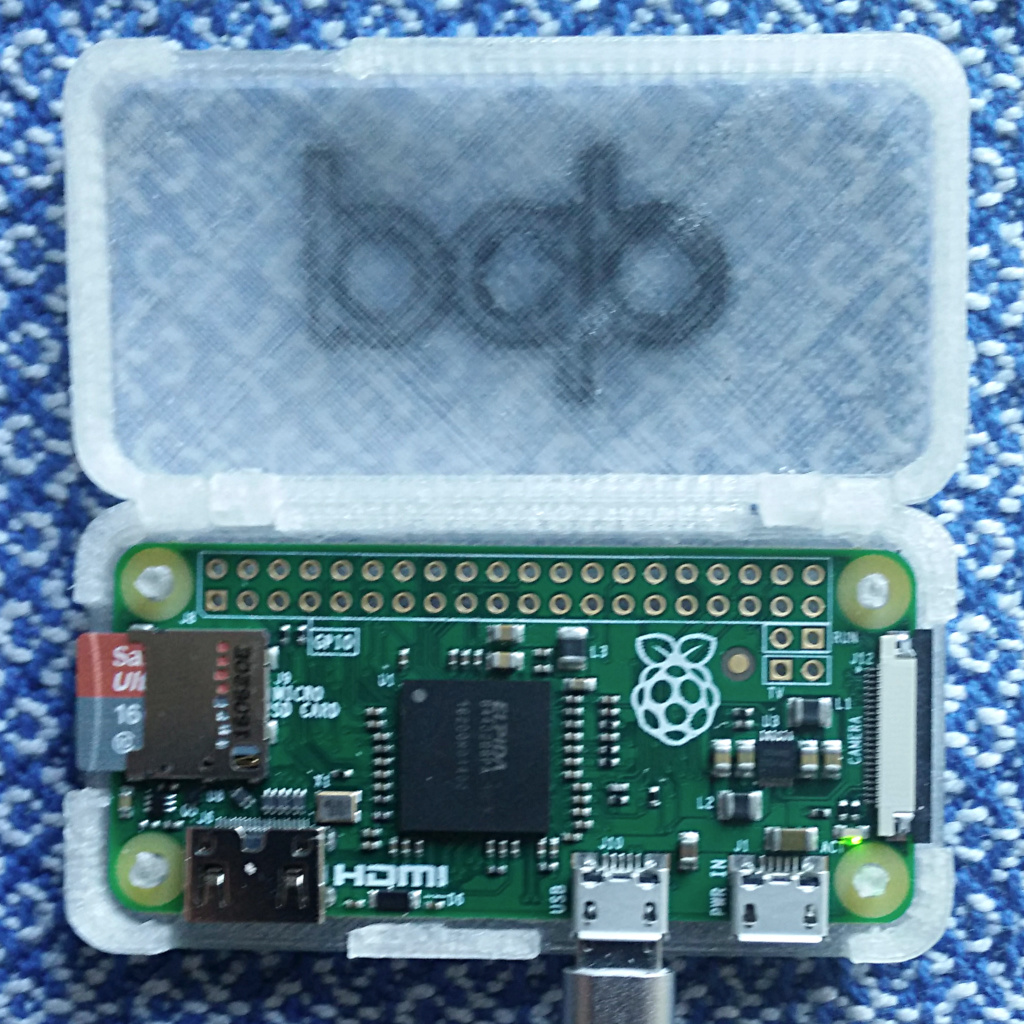
PDP (Pocket DEC Pretender) Zero: case open, very few blinkenlights But it’s a genuinely useful (for my values of useful) emulation platform. Here it is pretending to be a PDP-8, running BASIC under OS-8:

PDP (Pocket DEC Pretender) Zero: PDP-8 BASIC! (background in case pictures woven in Toronto by Deftly Weft)
-
TYPE BANG: First Person Shooter, 1975 style
 — from the source code of an early (1975) time-shared system version of The Oregon Trail, as documented in On the Trail of the Oregon Trail.
— from the source code of an early (1975) time-shared system version of The Oregon Trail, as documented in On the Trail of the Oregon Trail.





